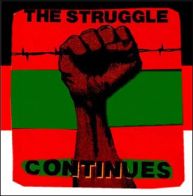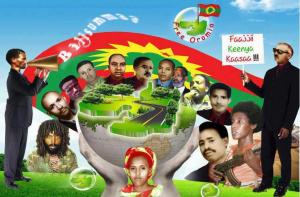It is with great excitement that I announce to you, OSA members, supporters, and the Oromo, that Dr. Gudata Hinika has been selected as the Keynote Speaker for the 2014 Oromo Studies Association (OSA) Annual conference. He is an inspiration to many Oromo and African born immigrants in the Diaspora. His achievement is stellar! His commitment to empower the Oromo people and other peoples of Ethiopia is commendable.
The Annual Conference of the Oromo Studies Association will be held onAugust 2-3, 2014, in Washington D.C. Metro area. The Theme of the conference is “Gada & Oromo Democracy: Celebrating 40 Years of Research and Oromo Renaissance.” The Deadline for submission of articles and panels is May 21, 2014.
Please send articles and panel proposals to OSA President at ielemo@yahoo.com. Below is the full profile of the distinguished scholar, Surgeon Physician and Philanthropist Dr. Gudata Hinika. It is a great honor and privilege for me to introduce our keynote speaker.
Dr. Gudata S. Hinika was born in rural Oromia, Ethiopia, and was raised by his grandmother in the hinterlands of southern Oromia, in a village called Gode. As a child, he lived through the strife of starvation, drought and communist occupation. As a young physician, he had the distinction of serving as a chief surgical resident at King/Drew University Hospital in Los Angeles. Thanks to his rich academic experience and robust surgical residency training, his career has since blossomed. Since 2004, he has served as the Chief of Trauma, General and Critical Care Surgery at California Hospital, the busiest private trauma center in Los Angeles. Throughout his distinguished career, Dr. Hinika has dedicated his life to alleviating adverse health conditions in underserved communities. His commitment extends far beyond hospital walls – locally and globally.
Dr. Hinika’s concerns focus on introducing sustainable solutions to communities in need, both in the United States and in his native Oromia, Ethiopia. Seeing similar alarming disparities in health, wealth and education, Dr. Hinika has been delivering sustainable solutions in rural Ethiopia and South Los Angeles. Dr. Hinika started his work in the rural village of Gode, Ethiopia, in 1995 by funding college scholarships that enabled deserving high school students to pursue their college education, all expenses paid. This commitment evolved into the construction and development of elementary, middle, junior high schools, and most recently, the first high school in the area. Gode High school has been cited by the Ethiopian Ministry of Education as a model of public-private collaboration.
In 2007, Dr. Hinika founded Ethiopia Health Aid, a not-for-profit organization that is dedicated to providing access to care from rural villages, townships and cities in remote areas in Ethiopia. He currently leads the development of a Health Village composed of a hospital, medical school and satellite clinics in the rural township of Arsi Negele, to provide basic hospital care and education to a population of 1.2 million – that is currently bereft of resources. To bridge the continuum of healthcare access, Ethiopia Health Aid has also developed a unique Knowledge Exchange Program in collaboration with the prestigious Adama General Hospital and Medical College, a tertiary care facility midway between rural Ethiopia and the country’s capital city. This Knowledge Exchange Program sponsors medical professionals at all levels (physicians, nurses, technicians and administrators) to mentor and learn from each other through actual site visits (medical missions) and virtual communications (telemedicine and webinars).
In the US, Dr. Hinika worked for many years in the healthcare-challenged community of South Los Angeles. In 2008, he established Crenshaw Medical Center, a multi-specialty health facility that provides access to primary and specialty care to the underserved. He has been recognized for his outstanding community service by such national, state and community leaders as the former US Representative Diane Watson, County Supervisor Mark Ridley Thomas, City Councilman Bernard Parks. As the head of Trauma, General and Critical Care Surgery at California Hospital Medical Center, Dr. Hinika has been instrumental in establishing the hospital as a vital force in trauma care. In 2010, Dr. Hinika received the Treasure of Los Angeles award for his leadership in trauma care.
In 2011, under his exemplary leadership, California Hospital received its third consecutive rating of “Zero Deficiencies,” the highest quality rating awarded to trauma centers by the American College of Surgeons. With this remarkable achievement, California Hospital’s trauma center is now one of a select few in the nation to hold such a distinction. Dr. Hinika received his medical degree from Loma Linda University. He completed his General Surgery residency at Martin Luther King Hospital. He is Board Certified in his specialty and is a Fellow of the American College of Surgeons. Dr. Hinika is a recognized speaker and educator, working with both the American College of Surgeons in the US, and the International College of Surgeons to promote advances in general and trauma surgery. He is also recognized for his work with Adama General Hospital and Medical College as well as the Ethiopian Medical Association.
The Charles R. Drew University Lifetime Achievement Awardee for 2011, Dr. Hinika is the recipient of the prestigious 2012 National Meritorious Award from the National Medical Association. He is also a recipient of the 2012 Distinguished Africans in America award from the American Medical and Education Services Foundation. In September 2012, the United Nations Association recognized Dr. Hinika’s work by presenting him with their highest honors, the Global Citizens Award. Dr. Hinika is the author of
Healer’s Light: Achieving the Impossible.
Ibrahim Amae Elemo, M.D, M.P.H
President, Oromo Studies Association
Senior Resident, Internal Medicine
Weiss Memorial Hospital
E-mail: ielemo@yahoo.com/ielemo@weisshospital.com
 Ebla 19/2014 FDG Goototni Qeerroon Barattootni Oromoo Yuunibarsiitii Jimmaa torbee tokko oliif gaggeessa jiiran daran jabaatee itti fufe.
Ebla 19/2014 FDG Goototni Qeerroon Barattootni Oromoo Yuunibarsiitii Jimmaa torbee tokko oliif gaggeessa jiiran daran jabaatee itti fufe.